"Go home, traveler"- thoughts on Tradd Moore's Doctor Strange: Fall Sunrise #1 (and maybe a few words on Ronin Book II #1)
Tradd Moore’s artwork is strange and fantastic, inspired by pop art as much as it is by comics. He’s telling a story about magic and his art is imbued with a different kind of magic.
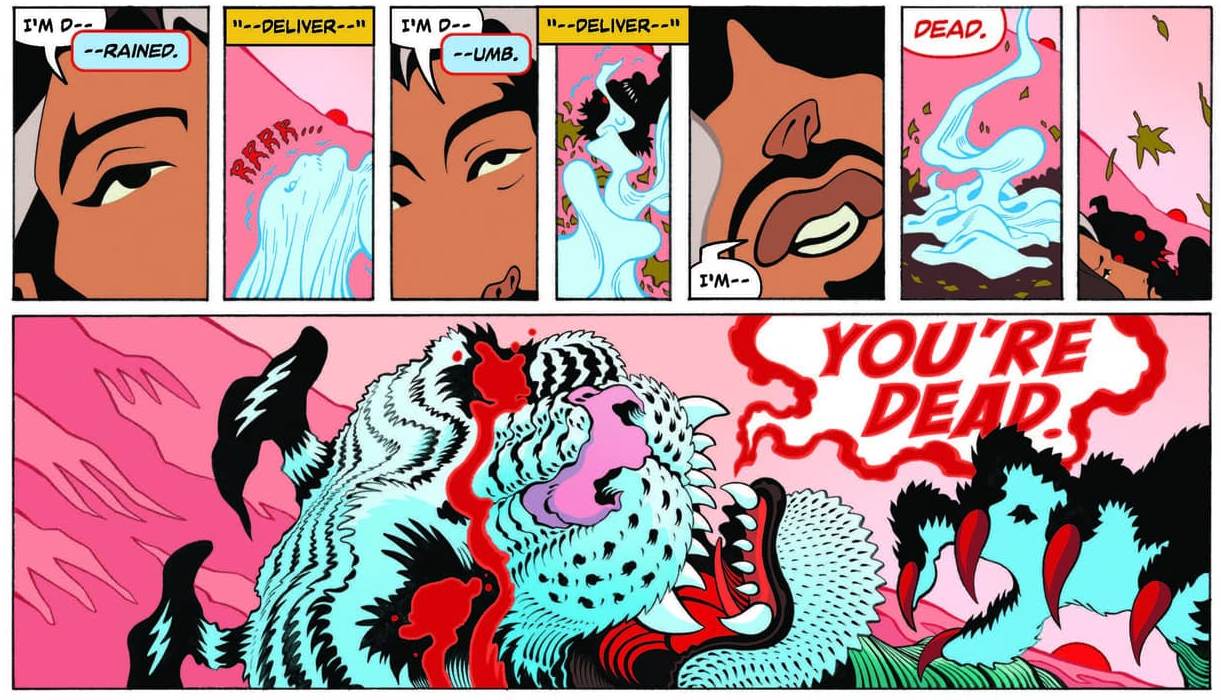
Forget continuity.
Forget that there are other Doctor Strange comics.
Forget that he’s supposedly dead in the comics (whatever “dead” means in terms of Marvel or DC these days;) At least, forget it as much as it’s a plot point that’s been happening over the last year or two and just accept this comic for what it is.
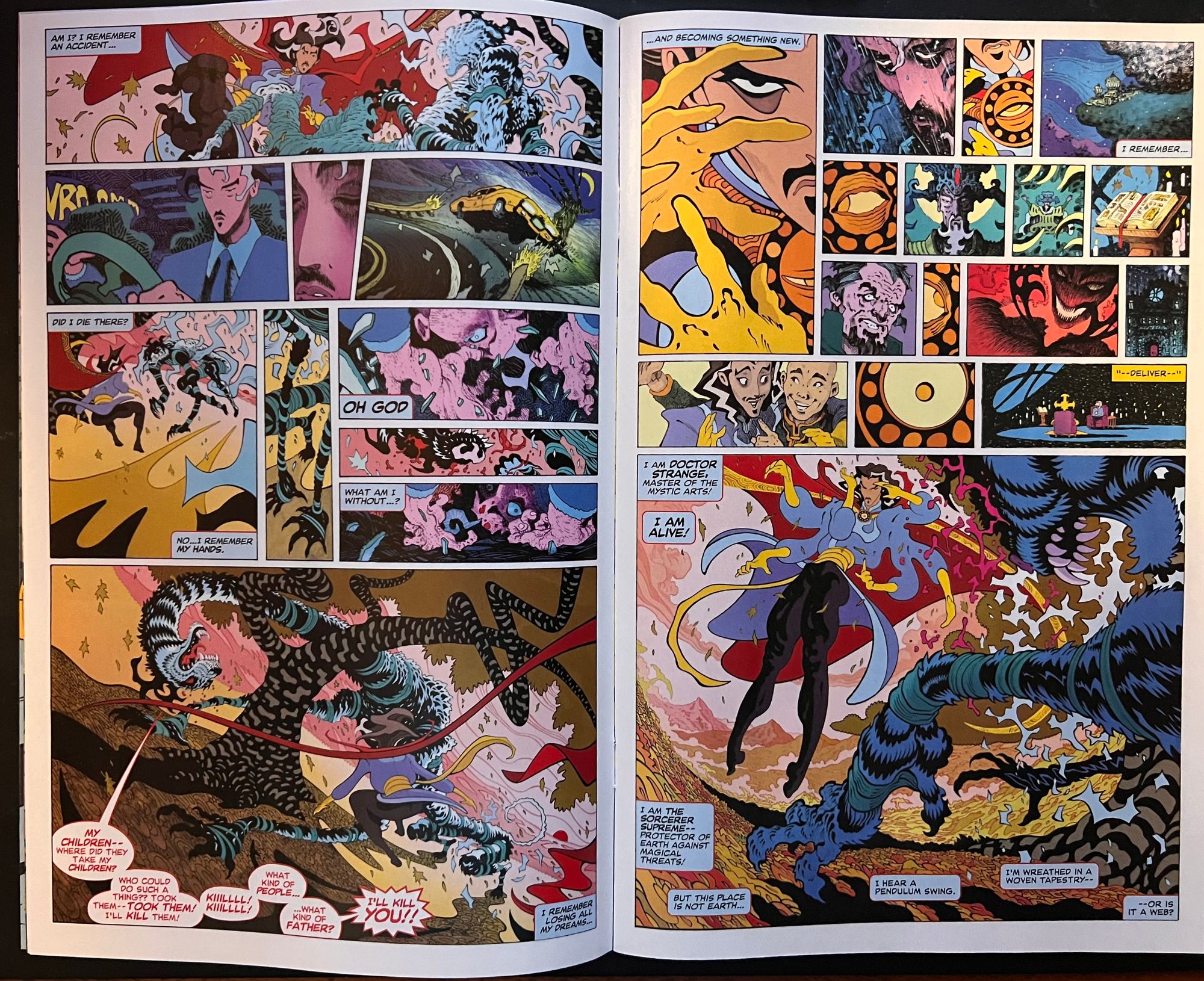
Tradd Moore and Heather Moore’s Doctor Strange: Fall Sunrise #1 lives and breaths outside of all that stuff. And hopefully, that’s where it stays for as long as this series runs. All you need to know s right there on the first few pages– Stephen Strange wakes up in a strange land (no pun intended) of fantastical landscapes, mystical creatures, and stunning magic. One of the dangerous spirits declares that he’s dead so that must mean that this is some afterlife. But even then, as Strange remembers who and what he is, he says triumphantly “I am Doctor Strange, Master of the Mystic Arts. I AM ALIVE!” So this isn’t a story about death but about life. Helping the spirit attacking him reconcile its love and loss, he heals a pained spirit and then sets out to walk this new land.
I don’t want to say that Moore’s writing gets in the way but it takes a secondary role to the storytelling that’s done through the art. Someday maybe there will be a wordless edition of this book that while a different experience, will have its own story. As it is, Moore is considered in his prose, using it to establish the pressure in this comic. There are panels and pages here where Moore just lets the image tell the story, allowing the comic to breathe. But when he starts layering in words over the art, it changes the pacing of how you’re reading this story, amping up the tension of Strange in this fantastical world. There are wordless (but never really silent) passages in this book where you’re taking in this environment right along with Strange, just living in the moment of the panel, but then when Moore’s writing comes in, he uses it to build your anticipation for what’s going to happen on the next page. There’s this building up of pressure through the words and then an exhilarating excitement of release when you get to that big next moment in the art.
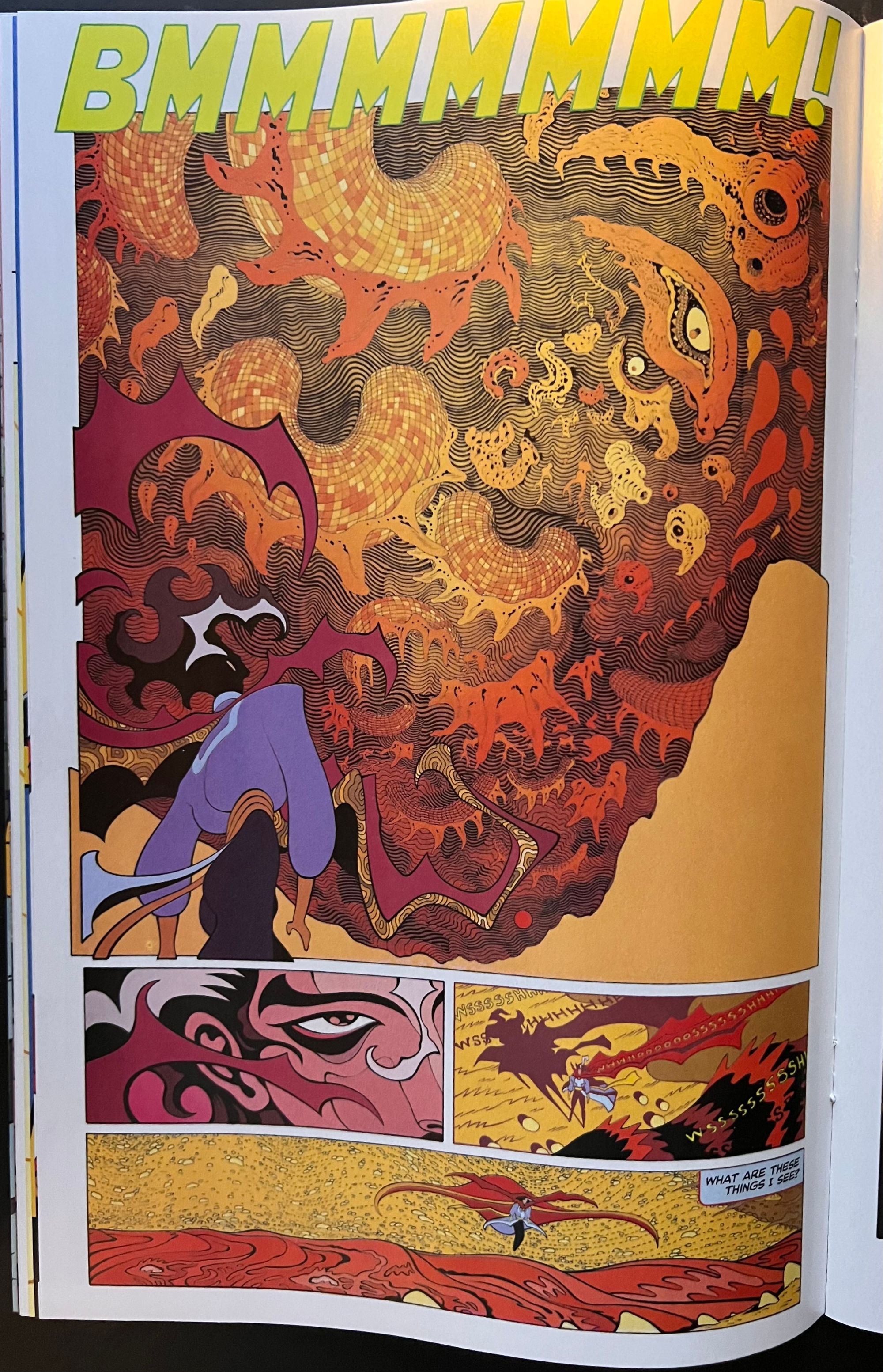
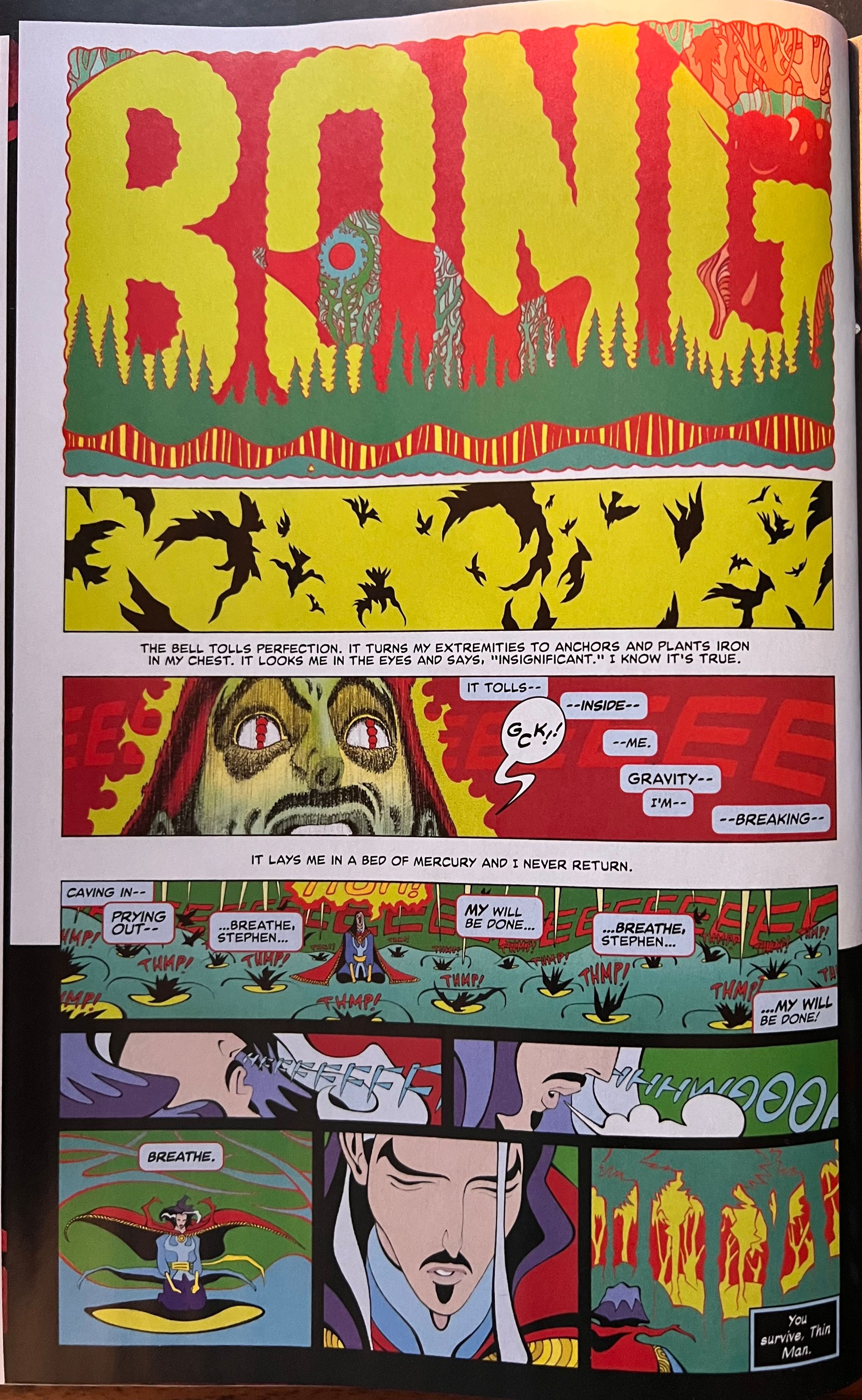
Moore’s artwork is strange and fantastic, inspired by pop art as much as it is by comics. He’s telling a story about magic and his art is imbued with a different kind of magic. There’s a lot in this comic where my eyes are telling me that the images shouldn’t work but by the time it gets to my heart, I’m sucked into the mysteries of Moore’s drawings. It’s already seductive with its melodic lines but Heather Moore’s colors pull your eyes further and further into the book, trying to lead you into something that’s just behind Moore’s linework. It keeps coming back to the idea of mystery in the storytelling; the writing, the art, and the colors all show us something, guiding us, but also obscuring something just outside our vision. It’s both playful and inviting, wanting us to have a more active role in peeling back the layers of this story.
It’s hard then not to compare Doctor Strange: Fall Sunrise #1 to another recent #1, Ronin Book II #1 by Frank Miller, Phillip Tan, and Daniel Henriques. It feels like both comics have the same goal to be visual feasts but end up being completely different experiences. Working over Frank Miller layouts (which maybe should be a bit of a red flag to begin with,) Tan’s work is huge and dense, each page just bombarding you with images, layers, negative space, and textures to an almost painful degree. After a surface reading, Tan is creating some of the best images of his career, finding a rendering style that seems just as mysterious as Moore’s work, Where Moore is going to envelop you in the art, Moore and Tan are persuading you to ask for more even as they just hammer at you, beating you over the head with the self-importance of their work.
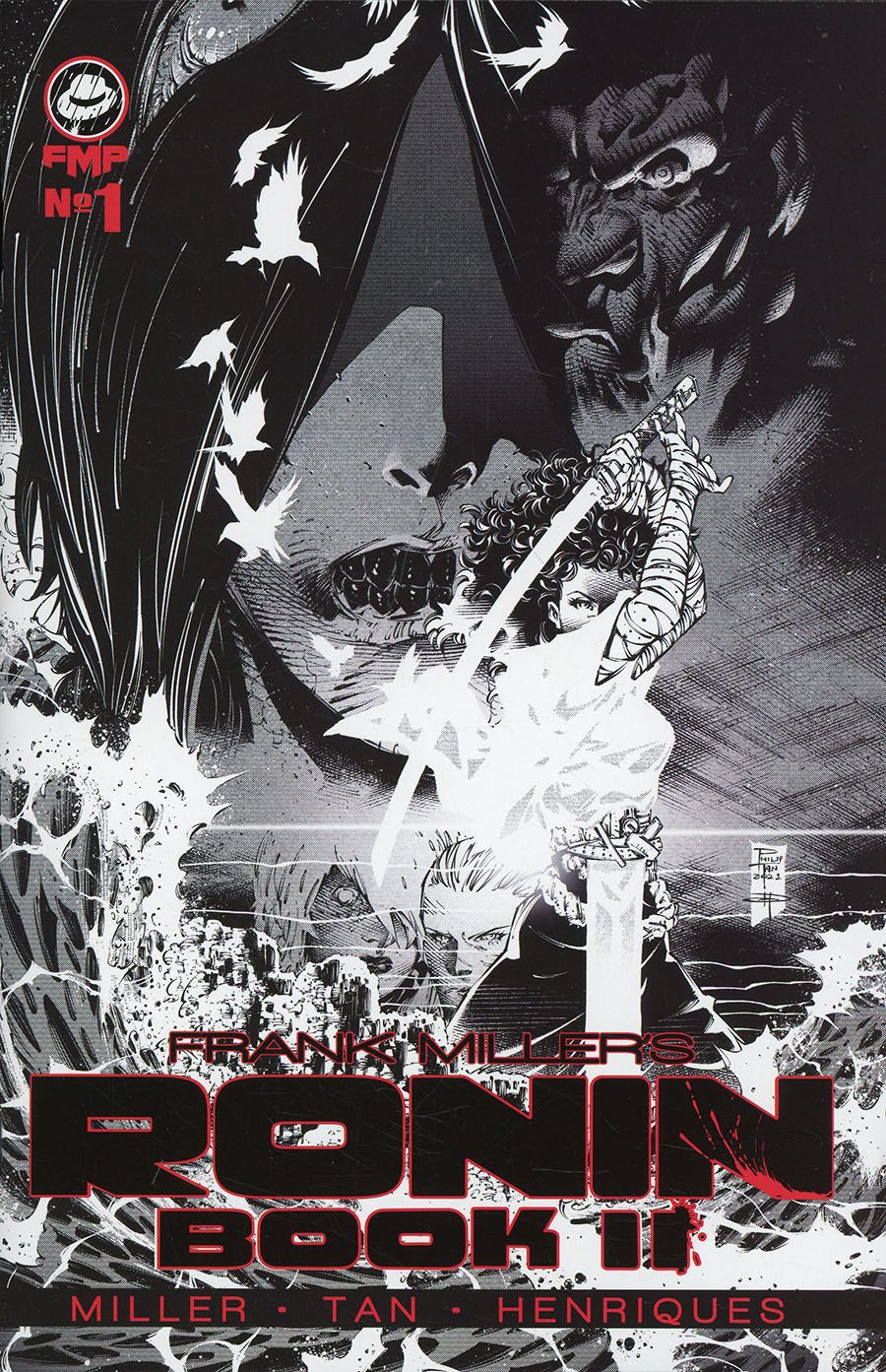
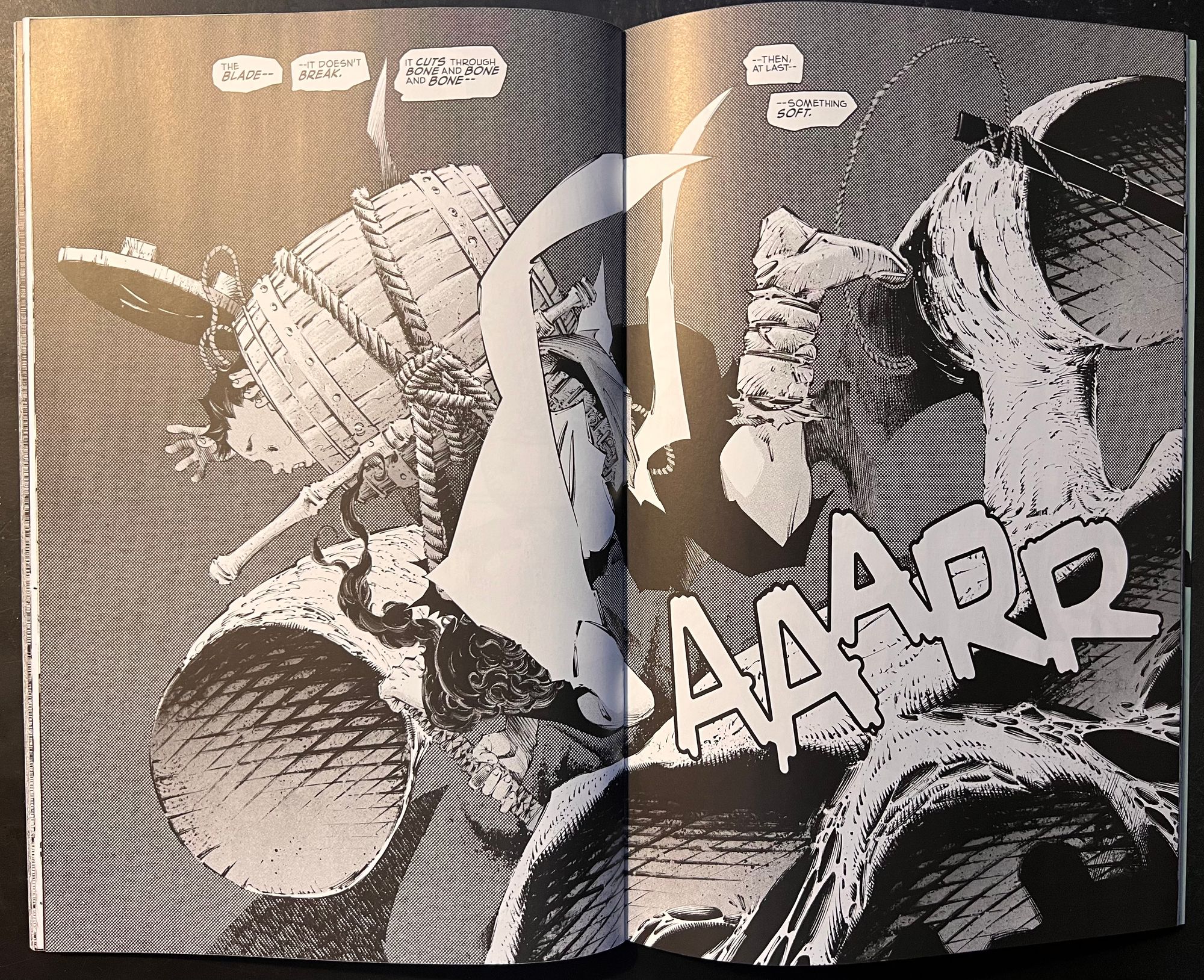
Almost more of Miller finally getting to do his version of Lone Wolf and Cub than a sequel to his Ronin (I guess Ronin: Book 1 now?), Ronin Book II #1 is a comic of smoke and mirrors, trying to distract you with Tan’s detailed art while there’s no real story here– at least, no significant plot or conflict is established in this issue. It’s all just anonymous ciphers leaping and dancing around for who-nows-how-many pages. For as kind of pretty as the book looks, it misses some intangible element that pulls you into the story like Tradd Moore and Heather Moore’s work do. Miller and Tan are doing a lot of work on the page, trying to show dazzle you with the dynamism of the image but that only gets them so far as you start to realize that there’s nothing to these images, no meaning or storytelling behind them other than the “kewlness” of the whole thing.
Doctor Strange: Fall Sunrise #1 may be the continuing adventures of Doctor Strange after he was killed (somehow, somewhen,) but Tradd Moore and Heather Moore manage to make it its own thing, pushing at the boundaries of what a Doctor Strange comic is supposed to be while being truer to the spirit of the character’s mystical and psychedelic roots than so many other of the character’s other comics even come close to. Moore’s draws this mystical, cool, and mystifying comic that’s a journey of discovery to find out what it is. The pure storytelling on display here transports you along with Stephen Strange to a new world that’s as exciting to behold as it is dangerous to journey through.
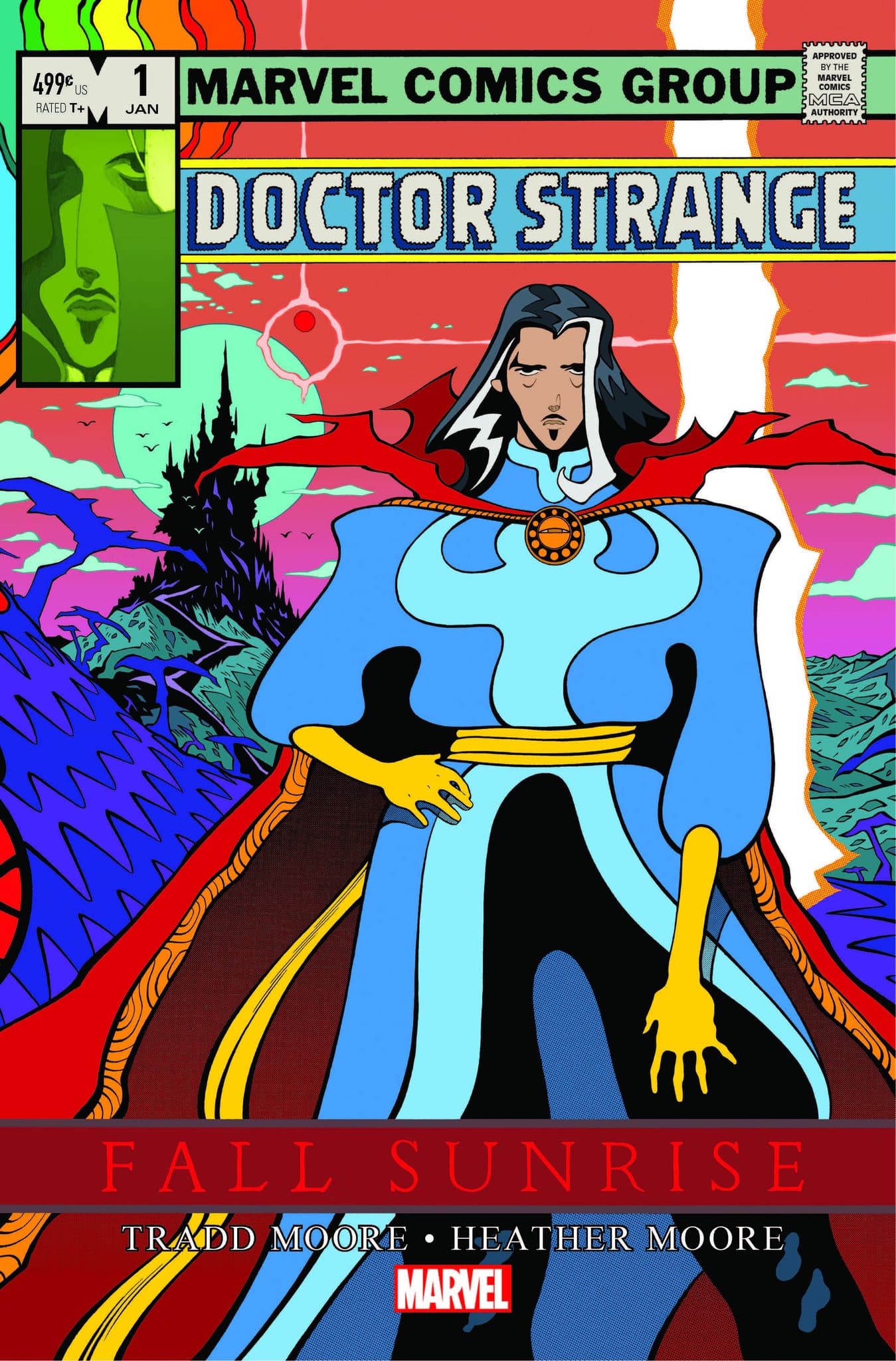



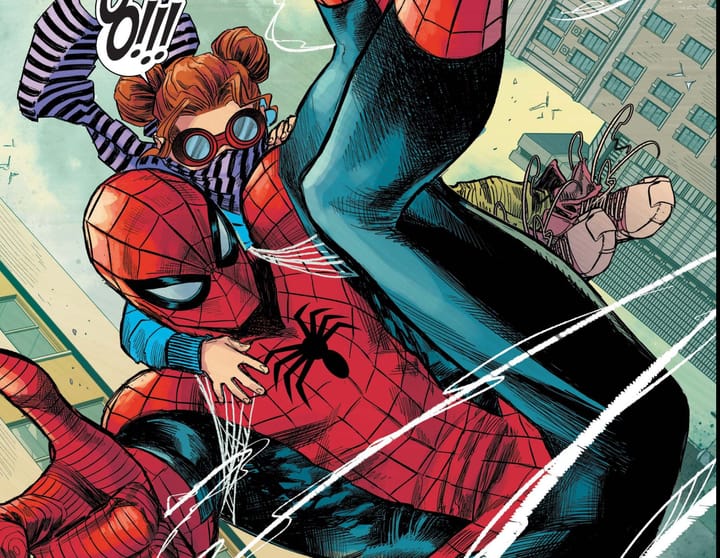
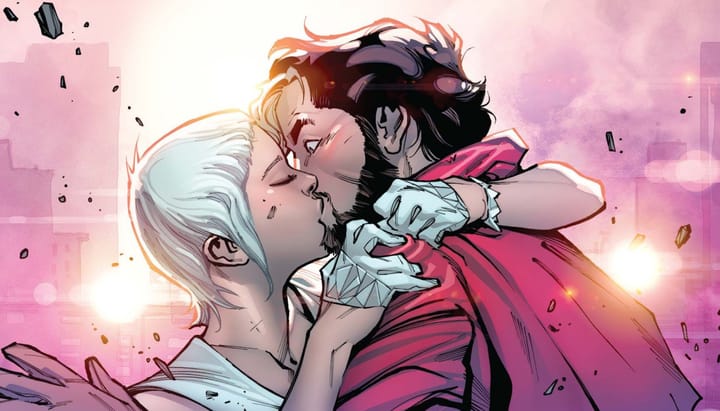
Comments ()